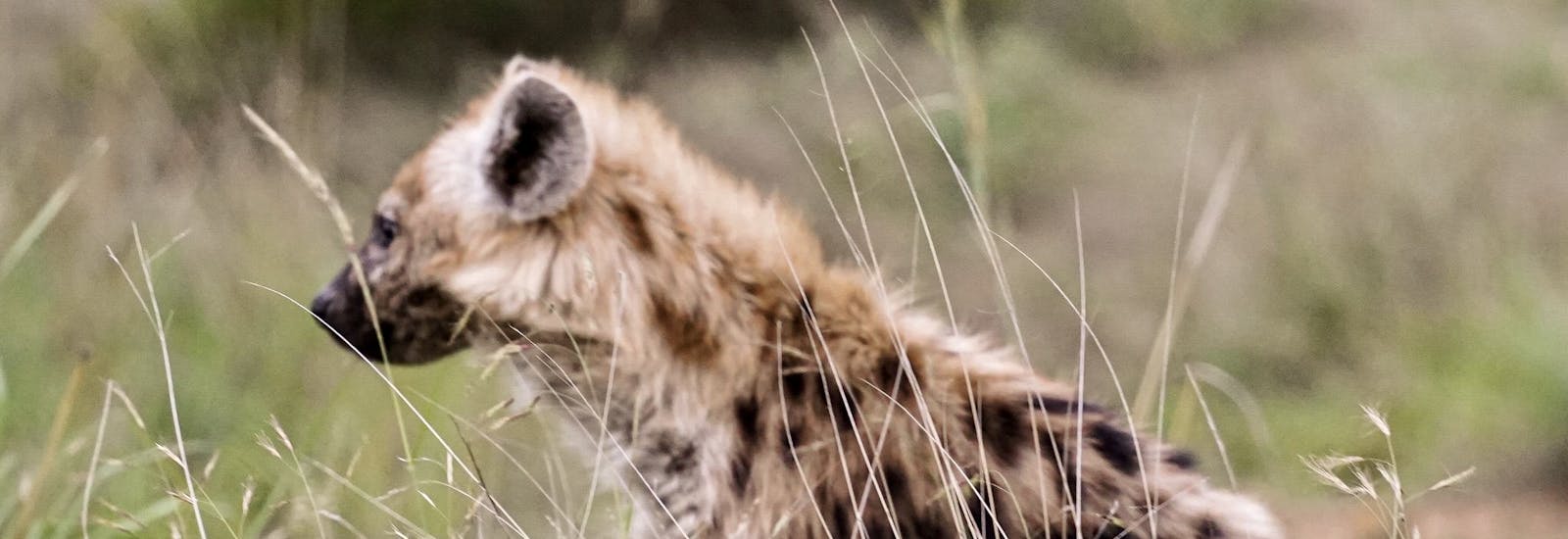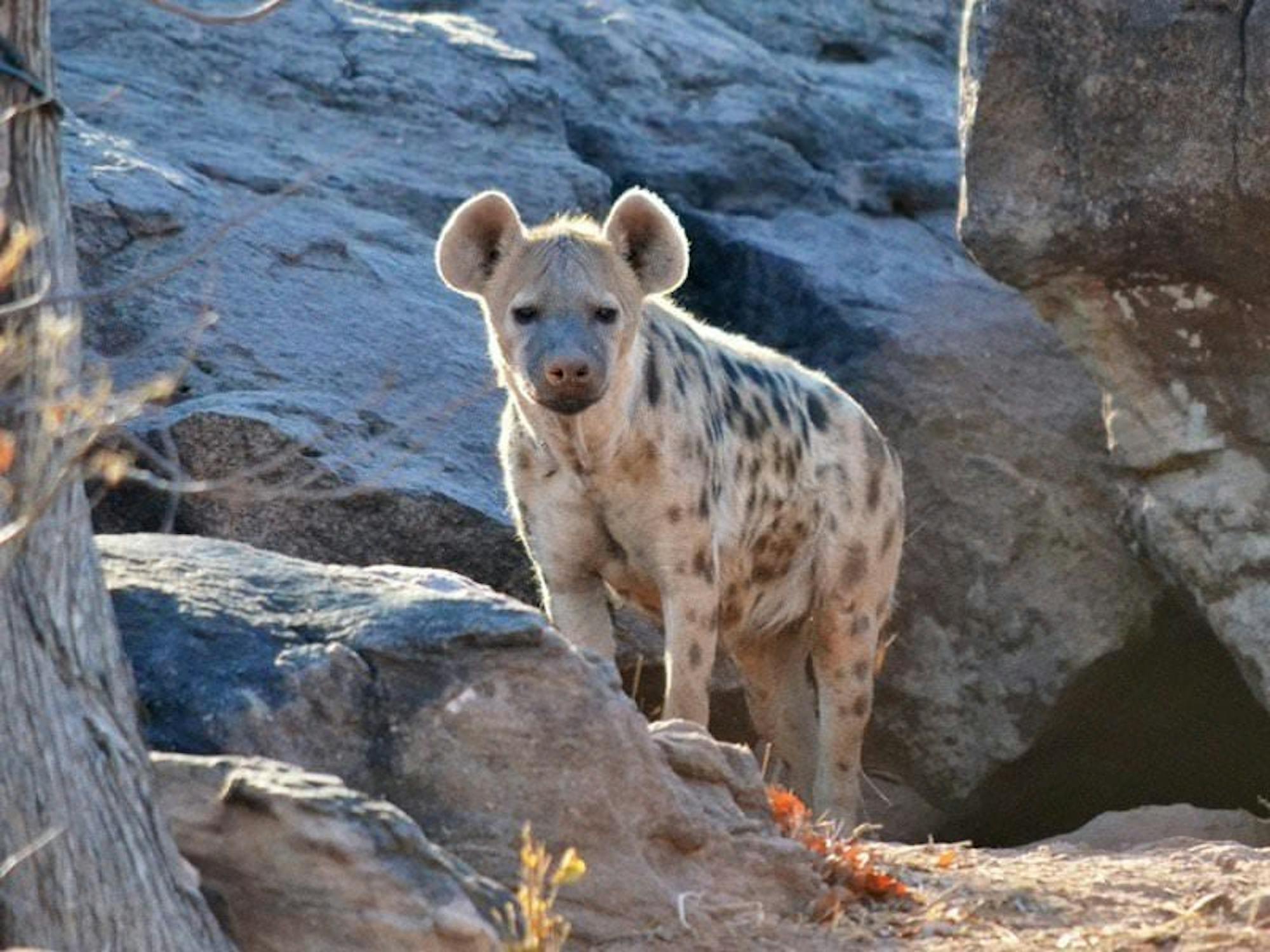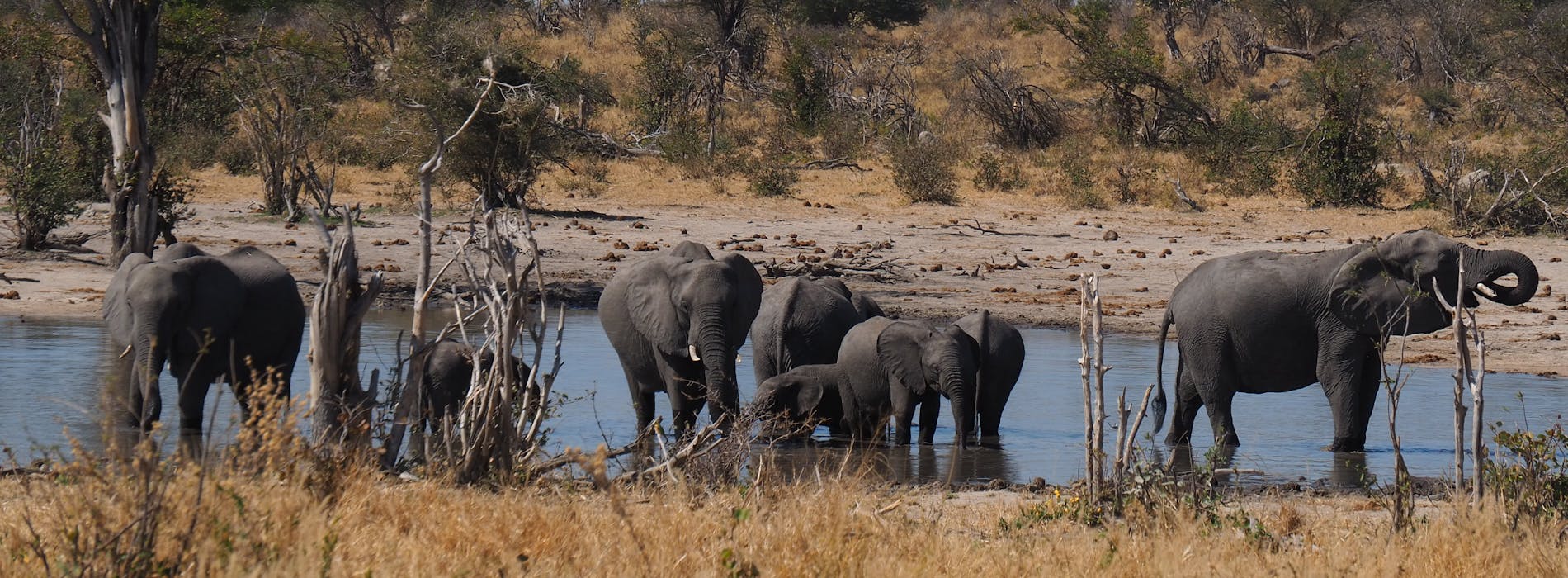
Will hyenas get the last laugh?
Ask people what their favourite African animals are, and you will often hear the same species mentioned: lions, elephants, rhinos, giraffes, cheetahs. But hyenas? These unique animals are rarely at the top of the list. Still, once you’ve seen them in the wild and had a chance to observe their fascinating social behaviour, watch a mother hyena lovingly play with her cubs, or hear the spotted hyena’s incredible vocalisations, they may make it onto your list of favourites.
Hyenas get a bad rap – most people who don’t know them think of hyenas as giggling, skulking scavengers. Centuries-old folklore traditions also cast them in a negative light, accusing them of being shape-shifters and witches. The truth is that hyenas are an essential part of the ecosystem and one of the most social mammals – and the idea that they are “Nature’s Trash Collectors” only tells part of the story.
In the case of the spotted hyena, they are also among the most successful hunters of all African carnivores due to their efficient and very social style of hunting their prey (it’s not true that hyenas simply steal carcasses from lions – often it’s the other way around!). Spotted hyenas can run up to 60 kilometres/37 miles per hour and, while working in an organised pack, can take down prey as large as wildebeest and Cape buffalo. They are scavengers, too, which helps clean up the bits left over by more finicky carnivores, such as bones and skin. Unlike spotted hyena hyenas, smaller ones (including brown hyenas, aardwolves, and striped hyenas) are primarily scavengers or insect-eaters.
Hyenas live in matriarchal groups called clans, with a highly specialised social order and means of communication. In spotted hyena society, up to 100 individuals can live in a single clan, with the larger, more aggressive females leading the group. Spotted hyenas have one of the most complex vocalisation systems of any African mammal: researchers have recorded at least 11 different sounds with distinctive meanings, including laughs or giggles (nervous excitement), whoops (calling to other hyenas or claiming territory), groans and squeals (greetings), grunts, growls and yells. Hyenas also mark their large territories using scent pastings from special glands.
They’re also beautiful animals – have you ever seen what a brown hyena looks like, with its unique leg stripes and glamorous long coat? Or tiny hyena cubs snuggling with their mother? Hyenas are like no other animals on Earth.

What threatens hyenas?
Unfortunately, like many of Africa's animals, all hyenas are threatened due to habitat loss, legal and illegal hunting, and prey depletion. Trophy hunters seeking the giant hyenas mainly remove breeding females, which weakens the clan's genetic viability and leadership experience. A hyena's body parts are desirable for the traditional medicine trade, which also makes them targets of hunters. Farmers consider them a threat to livestock, and many won't hesitate to kill hyenas that come onto their land (even the scavenger species). Along with the danger of traps and snares, in their role as scavengers, hyenas are vulnerable to being poisoned, both by toxic materials in human garbage dumps and by intentionally poisoned carcasses. It is nearly impossible to keep hyenas within a fenced wildlife reserve if they do not want to stay put – they simply dig under the fences and go. Their boldness and ingenuity in finding food sources often lead them into conflict with people as they move closer to towns, villages, and farms.
How can you help?
Hyenas play an essential role in the African food chain, and people need to understand that role better. Conservation efforts are aimed at field studies of specific hyena populations to understand better their behaviour, territorial densities, and prey utilisation, to refine current management practices, and to protect these fantastic animals better. Fieldwork includes tracking and observation of hyenas in their natural environment, camera trapping, nocturnal survey work, den monitoring, prey density studies, scat analysis, and monitoring of snaring and hunting incidents. Previous long-term studies of other species, such as leopards, have shown that implementing formal protection measures is crucial to increasing the populations of threatened species.
Volunteers can get involved in this type of study and work alongside field researchers at the Phinda Wildlife Research Project, which has recently started an intensive study of their spotted hyena population.
Both spotted and brown hyenas are part of the long-term study of wildlife populations at the Tuli Conservation Project, where volunteers can track these carnivores on foot, learn about their different roles, monitor feeding behaviours, and observe active brown and spotted hyena dens. Brown hyenas are also a rare species being monitored and protected at the Zingela Conservation Project.

